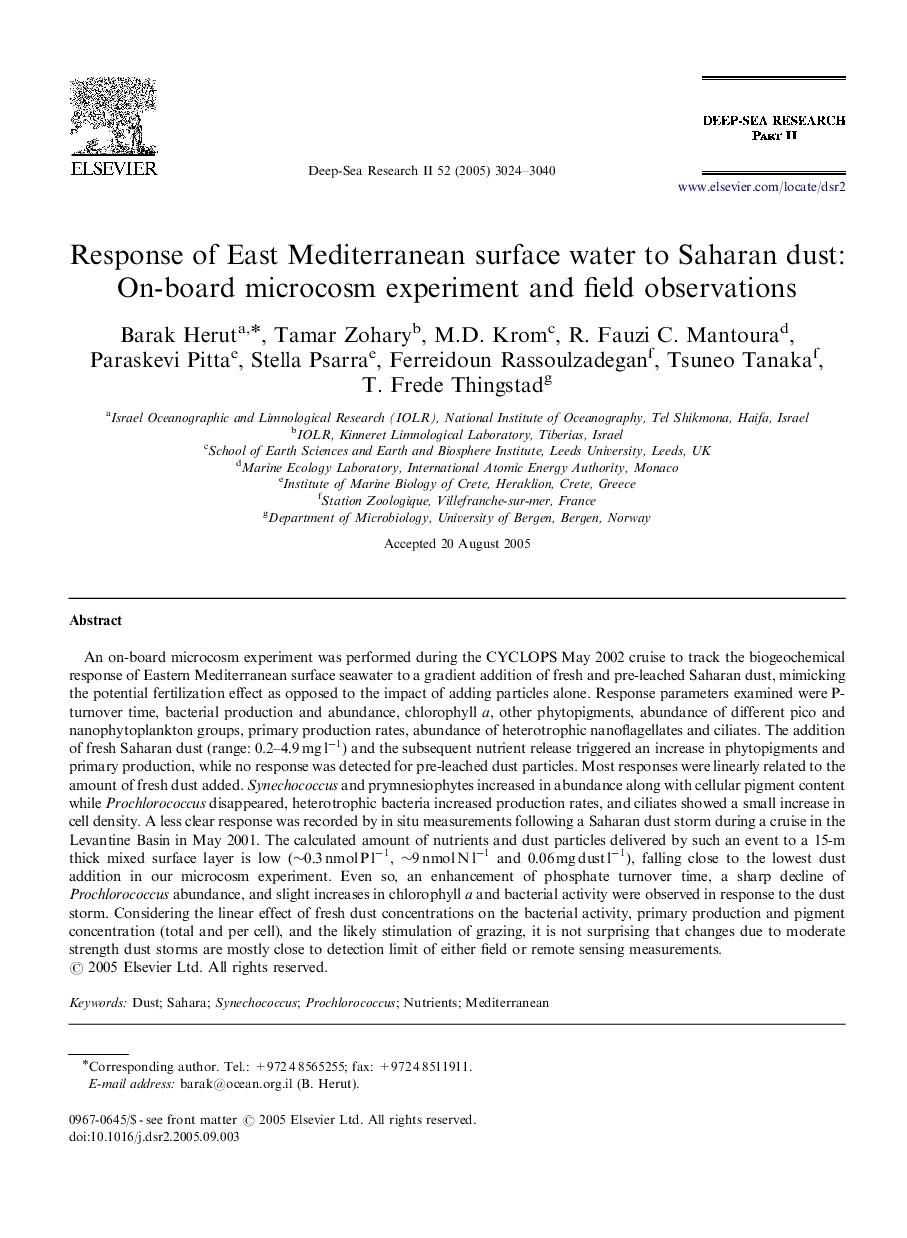| کد مقاله | کد نشریه | سال انتشار | مقاله انگلیسی | نسخه تمام متن |
|---|---|---|---|---|
| 4538336 | 1626521 | 2005 | 17 صفحه PDF | دانلود رایگان |

An on-board microcosm experiment was performed during the CYCLOPS May 2002 cruise to track the biogeochemical response of Eastern Mediterranean surface seawater to a gradient addition of fresh and pre-leached Saharan dust, mimicking the potential fertilization effect as opposed to the impact of adding particles alone. Response parameters examined were P-turnover time, bacterial production and abundance, chlorophyll a , other phytopigments, abundance of different pico and nanophytoplankton groups, primary production rates, abundance of heterotrophic nanoflagellates and ciliates. The addition of fresh Saharan dust (range: 0.2–4.9mgl-1) and the subsequent nutrient release triggered an increase in phytopigments and primary production, while no response was detected for pre-leached dust particles. Most responses were linearly related to the amount of fresh dust added. Synechococcus and prymnesiophytes increased in abundance along with cellular pigment content while Prochlorococcus disappeared, heterotrophic bacteria increased production rates, and ciliates showed a small increase in cell density. A less clear response was recorded by in situ measurements following a Saharan dust storm during a cruise in the Levantine Basin in May 2001. The calculated amount of nutrients and dust particles delivered by such an event to a 15-m thick mixed surface layer is low (∼0.3nmolPl-1, ∼9nmolNl-1 and 0.06mgdustl-1), falling close to the lowest dust addition in our microcosm experiment. Even so, an enhancement of phosphate turnover time, a sharp decline of Prochlorococcus abundance, and slight increases in chlorophyll a and bacterial activity were observed in response to the dust storm. Considering the linear effect of fresh dust concentrations on the bacterial activity, primary production and pigment concentration (total and per cell), and the likely stimulation of grazing, it is not surprising that changes due to moderate strength dust storms are mostly close to detection limit of either field or remote sensing measurements.
Journal: Deep Sea Research Part II: Topical Studies in Oceanography - Volume 52, Issues 22–23, November 2005, Pages 3024–3040